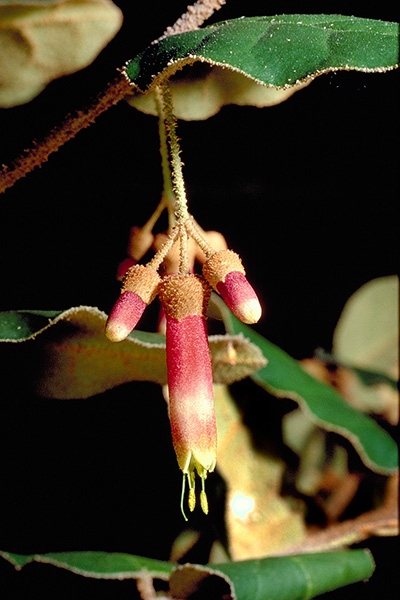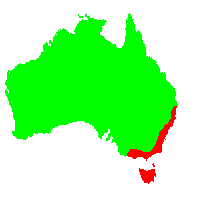General Description:
Correa is a genus of about 11 species although there are many forms which are difficult to allocate to any particular species. Botanical revision of the genus is warranted. They are mainly restricted to the eastern states although C.reflexa has a recorded occurrence in the east of Western Australia.
Correa lawrenceana is a small to medium shrub which may reach 3 metres in height. There are six recognised botanical varieties: var.lawrenceana, var.cordifolia, var.genoensis, var.glandulifera, var.macrocalyx and var.rosea. These differ in details of foliage, flower colour and characteristics and nature of oil glands on stems and leaves.
The leaves are typically leathery and roughly oval to heart-shaped up to 75mm long. The cream, green or red flowers are narrow, bell-shaped and about 20-30 mm long. The bells are comprised of 4 petals fused together into a tube. There are 8 stamens which extend beyond the end of the bell. Flowering occurs from autumn through to late spring.
C.lawrenceana has proven to be reasonably hardy under cultivation, particularly in moist, well drained soils in a protected position. Once established, the plant will tolerate extended dry periods. Although not a spectacular in flower as some other correas, the interesting foliage make this species an excellent landscaping plant.
Most Correas are attractive to honey eating birds and C.lawrenceana is no exception.
Propagation is difficult from seed but usually presents no difficulty from cuttings.
* EPBC Act = Environment Protection and Biodiversity Conservation Act 1999;
ROTAP = Rare or Threatened Australian Plants (Briggs and Leigh, 1988)
For further information refer the Australian Plants at Risk page

Correa lawrenceana
Photo: Brian Walters
 Australian Native Plants Society (Australia)
Australian Native Plants Society (Australia)













